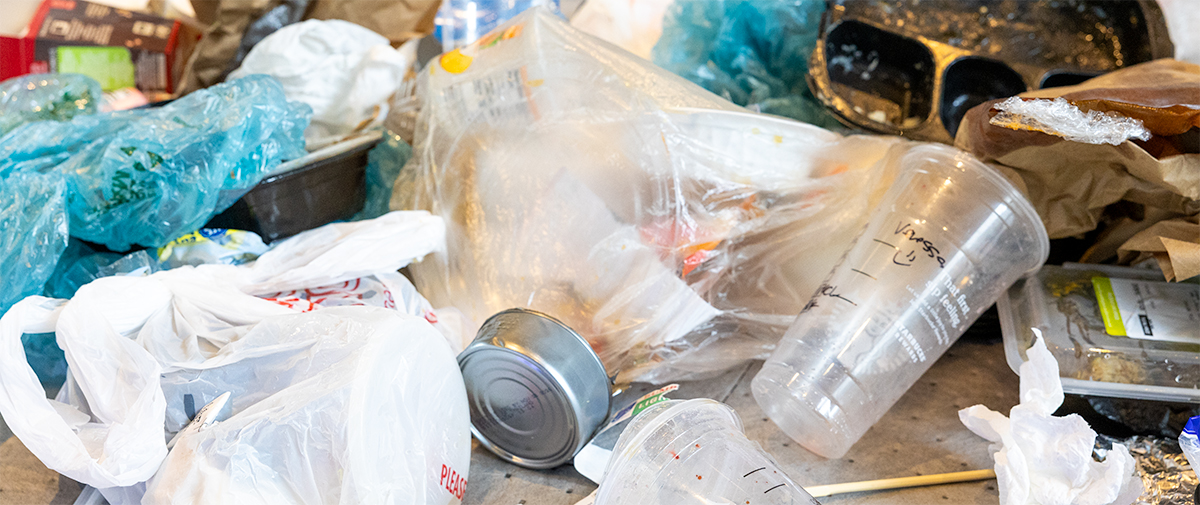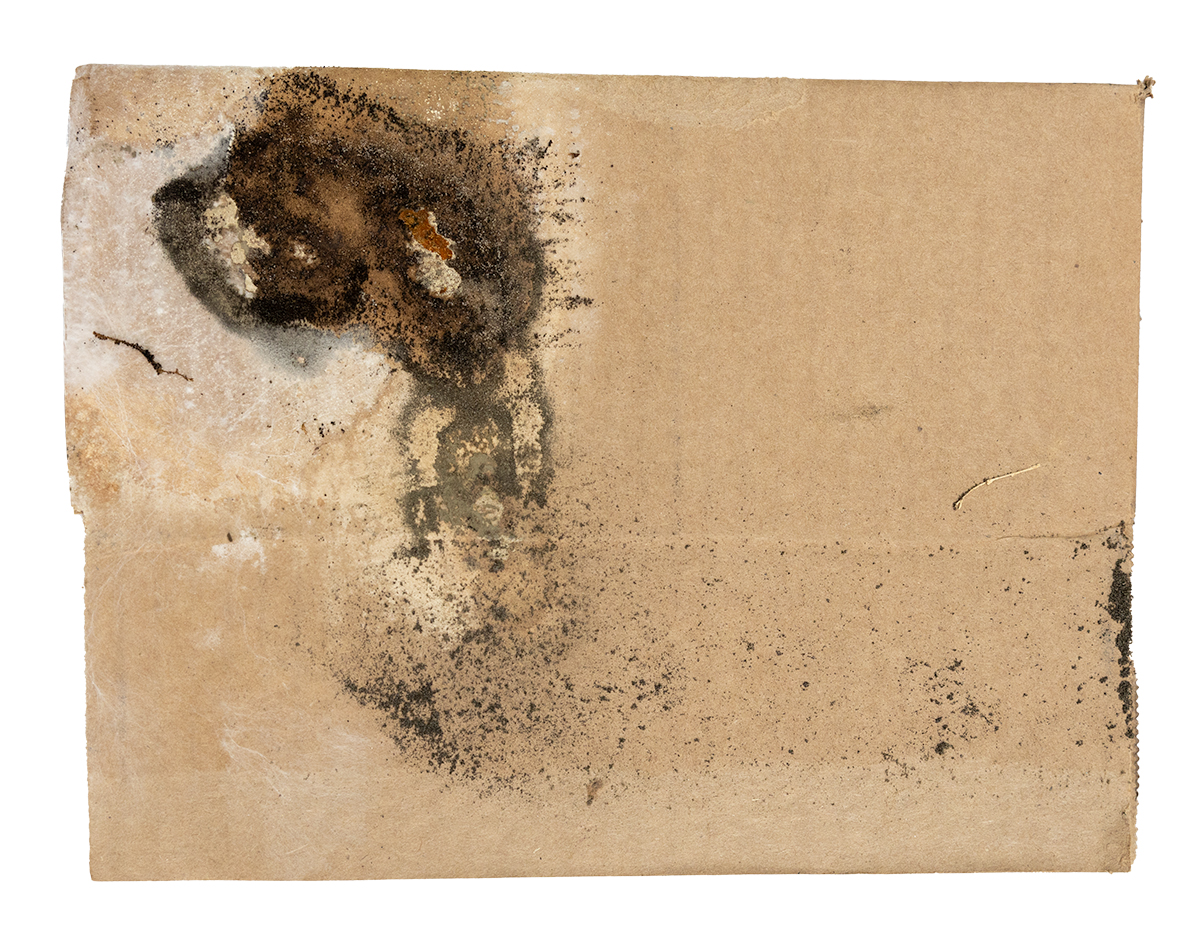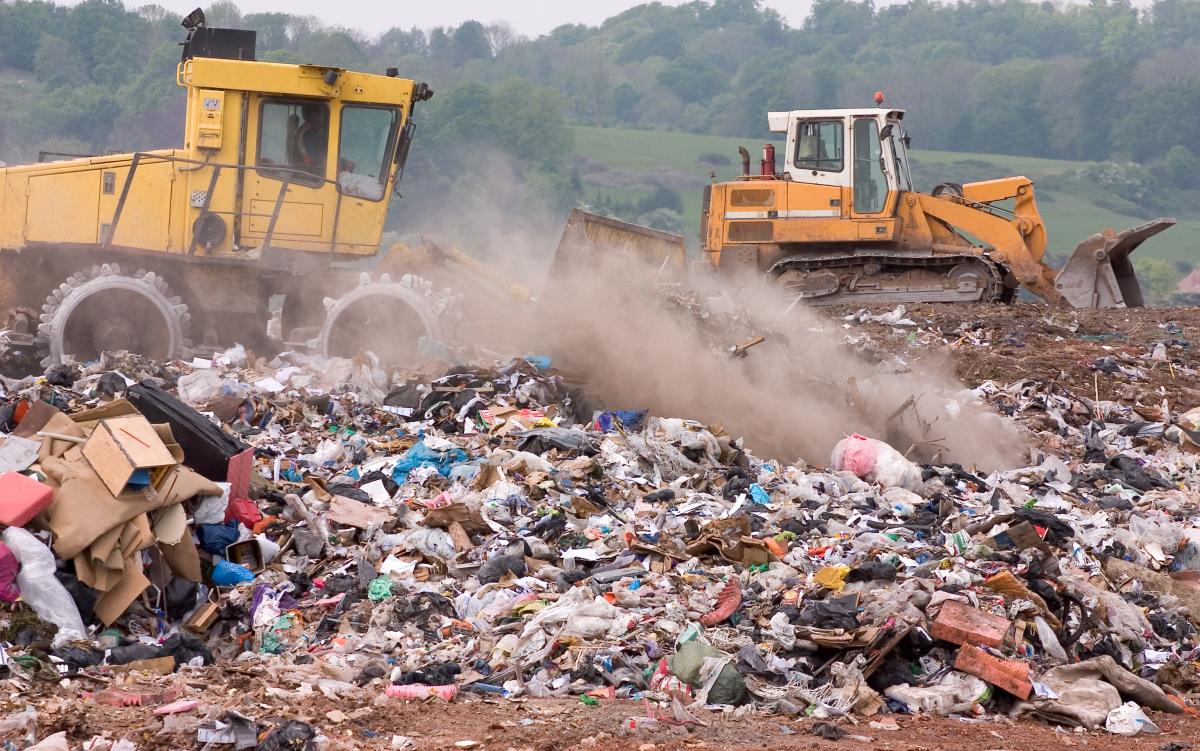
The phrase recycling contamination isn’t clear to people outside of the waste industry. Let’s break it down:
According to Merriam-Webster dictionary, contaminate means "to soil, stain, corrupt, or infect by contact or association" or "to make inferior or impure by admixture." In recycling, a contaminant is something that should not be in recycling because it can degrade other materials or the recycling process.
Common recycling contaminants that damage materials are food and liquids. Food and liquids in recycling cause mold.

The mold eats away at the fibers in paper and cardboard so it can't be turned into new paper. Mold can spread to other accepted items like bottles or cans, lowering their value.
Mold also makes items unsafe for the people who work with the material. This is one way contaminants can corrupt the recycling process.
Common recycling contaminants
When there is contamination in the recycling at the UW, the Recycling unit usually sees these contaminants:
- Food & liquids
- Dirty food containers
- Plastic bags and wrappers
- Paper towels, tissues, wipes and napkins
- Anything smaller than 3 inches wide
Why can’t contamination be sorted out in the facilities?
The mechanized sorting equipment at recycling facilities were created to sort the most common recyclables like cans, bottles, jars, paper and cardboard. It is difficult for the machinery to sort uncommon or dirty objects that have similar characteristics to those common items.
For example, a cardboard pizza box covered in grease and cheese has the same characteristics as a clean cardboard box. The system cannot differentiate these items and it can degrade an entire recycling load. Check out this blog post for more info.
Staff at recycling facilities also have to worry about these contaminants:
- "Tanglers": plastic bags, wires, clothing and string lights get tangled in the mechanized sorting equipment at recycling facilities. This damages the equipment and stops the process until someone can de-tangle the items. They also cannot be recycled at regular recycling facilities.
- Hazardous or biohazardous (medical waste): Things like batteries can be dangerous when not disposed of properly. Anything that is used in the research or medical fields like syringes, tubing, masks and gloves are considered medical waste. If recycling facilities finds medical waste in the recycling, the facilities send the entire load to the landfill to keep workers safe.
Why does it matter?
Putting contaminants in the recycling can worsen our environmental impact. When a load of recycling has too much contamination, the entire load is redirected to the landfill. This means that even the clean recyclable materials in the load end up as garbage.

Landfills are necessary for disposing of solid waste but there is an environmental cost. According to the EPA, landfills are the third largest source of human-related methane emissions in the US. Food and other organic materials in the landfill breakdown and generate methane when they decompose without oxygen. Methane is a greenhouse gas more noxious than carbon dioxide that contributes to climate change.
The easiest way to avoid recycling contamination is to put clean, common recyclables in your recycling bin. If an item is dirty and you can’t clean it, please put it in the garbage/landfill. It is better to toss one item in garbage than contaminate an entire recycling truck load!
Take UW Recycling’s training to learn more about compost, recycling and landfill waste at the Seattle campus:
- Student course: Waste 101
- Staff & faculty course: Intro to Recycling & Waste Diversion
- UW Medicine staff: Recycle Right at UWM
Questions about recycling and waste? Reach out to UW Recycling at recycle@uw.edu.